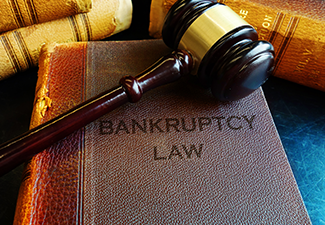When is Filing for Bankruptcy a Good Option?
Jan. 24, 2022
 Your debts are out of control, and creditors are nagging you for payment; in addition, you make a minimum payment monthly on some debts and others who try to hold off in hopes that something will change, you’re in a bind financially, but the thought of bankruptcy scares you. Words such as “failure” and “the loss of everything” sweep through your mind.
Your debts are out of control, and creditors are nagging you for payment; in addition, you make a minimum payment monthly on some debts and others who try to hold off in hopes that something will change, you’re in a bind financially, but the thought of bankruptcy scares you. Words such as “failure” and “the loss of everything” sweep through your mind.
Bankruptcy in the United States is a viable option to get you back on your feet, personally and financially. In most cases, no one is even going to know you filed unless you tell people – or you owe someone money that you’re trying to resolve in bankruptcy. Bankruptcy has typically been billed as a “fresh start,” and that’s exactly what it is.
As for losing everything, that too rarely happens. If you file for bankruptcy under a Chapter 13 repayment plan, generally you can keep real assets like your home and car so long as you can continue your monthly payments. If you file a liquidation plan under Chapter 7, your home and cars will most likely be exempt and won’t be sold off.
If debt is overwhelming you in Amarillo, Texas, contact me at the Swindell Law Firm. I have been helping countless others like you get a fresh start under bankruptcy for the past four decades. I also proudly serve clients in the entire Texas panhandle, including Borger, Pampa, Hereford, and Dumas.
Assessing Your Financial Status
Assuming you have debts that you can’t pay fully, or maybe can’t even partly pay, and you decide to weigh the bankruptcy option. The first consideration is how much income you have coming in. If you have enough to meet your obligations and take care of the essentials of daily living, you may not even qualify for bankruptcy.
If you decide that Chapter 7, which eliminates almost all of your unsecured debt in a matter of months, is the way to go, you must first qualify income-wise. If you have little or no income, that’s a slam dunk, but if you still have monthly income, it must fall below the median income for a household of your size to qualify. The Texas median income in 2021, according to the U.S. Census Bureau, was $52,308 for a single person, $70,418 for a couple, and $88,109 for a family of four.
Unless your income falls below the median, which is adjusted yearly, you probably will have to consider Chapter 13. Under this chapter of the bankruptcy code, you must calculate your disposable income and create a plan to pay off your creditors as much as possible over a three- to five-year period.
Understanding Your Bankruptcy Options
Chapter 13 is known as “the wage earner’s plan,” meaning you have enough to make at least partial payments toward your debt obligations while still having enough to pay for the essentials of daily living. Your plan should aim to consolidate your debts and propose an affordable monthly payment that the bankruptcy trustee assigned to you will supervise until the three or five years have passed. After that, you’ll be discharged from bankruptcy. The length of the repayment plan, in a nutshell, depends on how much disposable income you have.
Assume you’re behind on your car or home payments when you file for Chapter 13. In that case, you can include the arrears amount in your repayment plan, but from that point forward, you will have to resume your normal monthly payments.
Chapter 7, which is preferred by most filers in Texas, will sell off your nonexempt assets to help pay creditors. Fortunately in Texas, the allowed exemptions are perhaps the most generous in the nation. You can retain a home of any value (contingent upon property size acreage restrictions), a car of any value for each family member, and a $50,000 personal exemption, which rises to $100,000 for a couple filing jointly.
In other words, the odds of retaining your most valued possessions are pretty good. And the best part is that a Chapter 7 runs its course in about six months, and then your unsecured debts will be gone. You can then start over-building up your credit again.
The Automatic Stay
Regardless of which chapter you file under, the bankruptcy court will immediately issue what is called an “automatic stay” to stop creditors and bill collectors from contacting you. The stay will also put a hold on repossession and foreclosure efforts, but this part can be lifted upon petition by the secured debt holders, though it does give you time to work something out.
Debts That Cannot Be Forgiven
Under either plan, certain debts are not subject to discharge. These include most student loans, spousal and child support payments, and most taxes.
On the other hand, other assets cannot be touched by bankruptcy filings in any state, including Texas. These include retirement accounts and pensions.
How the Swindell Law Firm Can Help
If debt is overwhelming you, contact me immediately. I can help you assess your situation and determine the options available and which one is best for you – Chapter 13 or Chapter 7. Do not turn to your 401(k) or IRA to pay debts. Bankruptcy exists to help you avoid such drastic measures.
I have been helping others in your situation for 40-plus years. Contact me immediately at the Swindell Law Firm, and let’s put in motion the process to obtain your fresh start.
My firm serves clients in Amarillo, and the Texas panhandle, including Borger, Pampa, Hereford, and Dumas, Texas.
